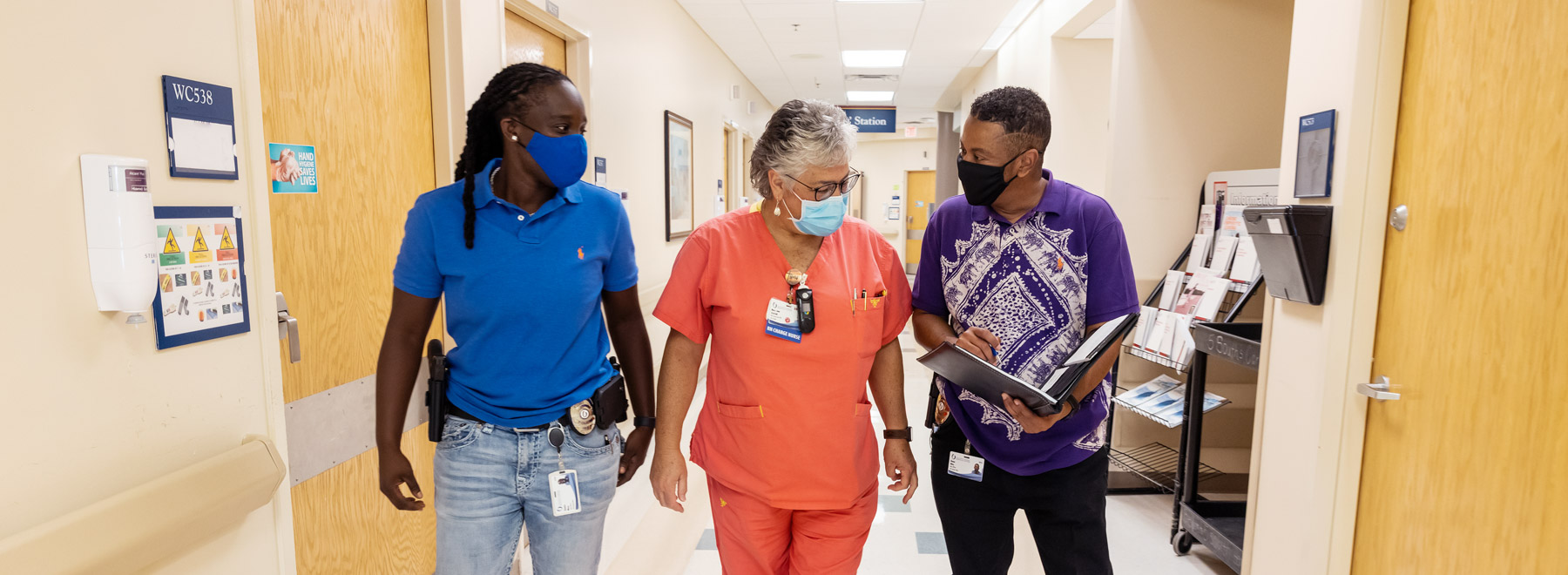Police behavior response team brings added security, calming presence to hospital
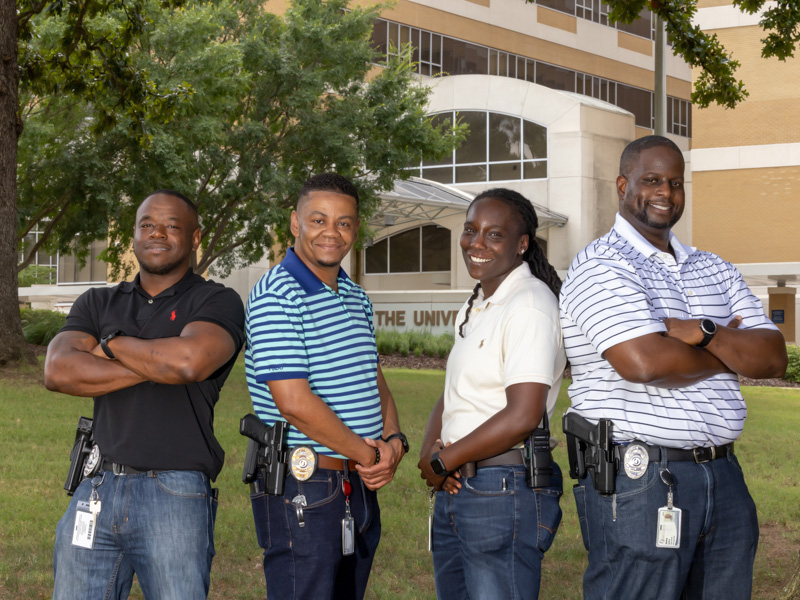
The UMMC Police and Public Safety Department’s behavioral response team piloted in February was so successful at de-escalating potentially violent situations that it has been implemented as a full-time, permanent fixture with double the number of officers.
The rapid response unit, which responds to panic alarms and disruptive patient emergencies – also known as code white — was designed to reduce the number of workplace violence incidents and injuries to patients, employees, students and visitors.
Dressed in plain clothes with a weapon, badge and ID clipped to their belts, the four officers, working in shifts of two, intervene to de-escalate situations that might otherwise become violent enough to require an arrest or hospitalization.
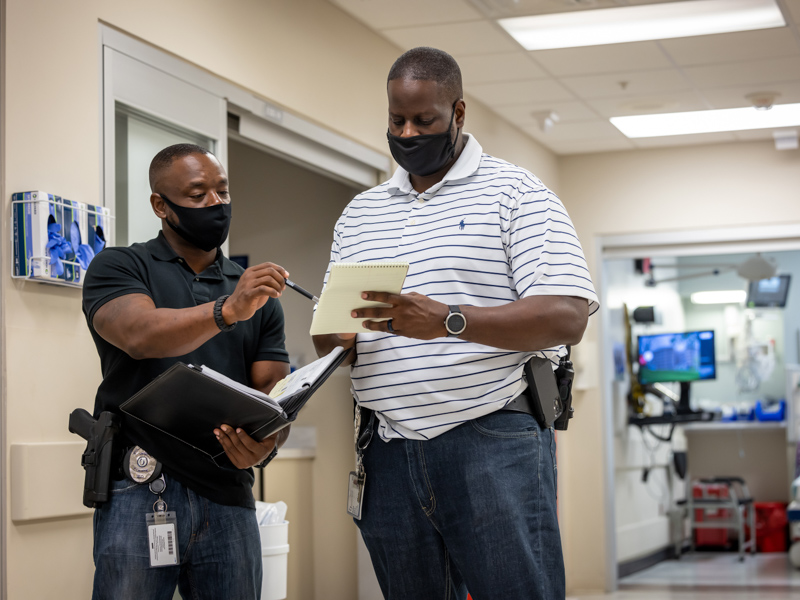
During the 30-day pilot, the team of two, at the time, responded to more than 100 calls. When the pilot was over, the calls kept coming, helping to solidify its success.
Police Chief Mary Paradis, who requested that the BRT be made permanent, said she is grateful institutional leadership approved the request to fund the unit, effective July 25.
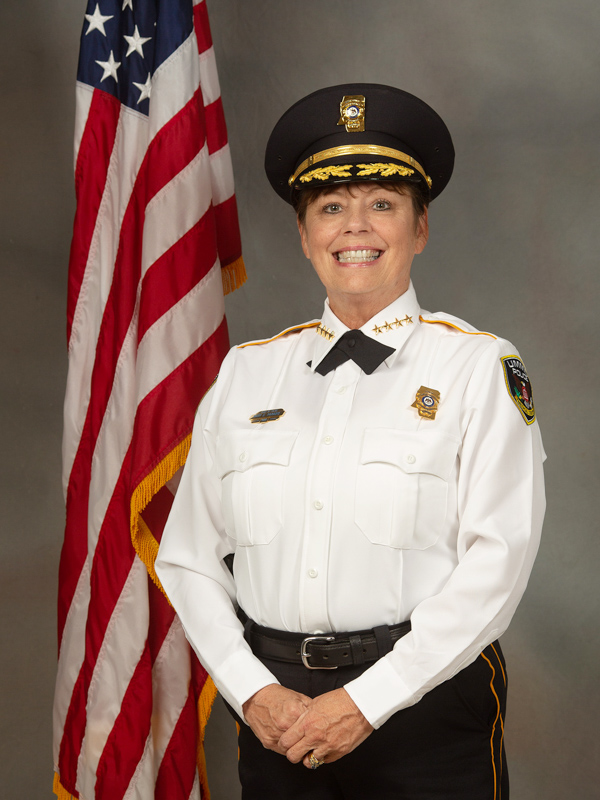
“In today’s world, law enforcement is routinely called to respond to folks who are experiencing a behavioral health crisis, and UMMC is not immune,” said Paradis. “Through empathy and community policing, we will be able to better protect our fellow UMMC staff and visitors.”

Dr. Jonathan Wilson, chief administrative officer, said the BRT concept was developed after tracking data from code white activations (which indicates to response personnel there is a disruptive person in the stated area), panic alarms and service calls to UMMC Police. After measuring the overwhelmingly positive response to the pilot, administrators felt confident about funding a permanent and expanded team.
“Funding new projects is always a challenge, but workplace violence is an important initiative, and the need was seen by leadership across the institution,” said Wilson. “We are fortunate to have the BRT in place to not only better serve our patients and their visitors but also to better protect our staff, students and faculty.“
In addition to reducing the number of violent incidents, the goals of the BRT are to cut back on resource waste, reduce clinical/patrol burnout and help with staff shortages, said Deputy Police Chief Joshua Bromen.
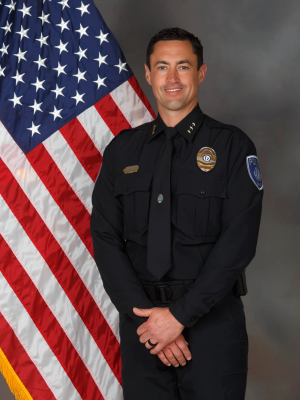
“Long-term goal - as BRT models the desired behaviors and de-escalation techniques - is all UMMC staff will become more skilled, ultimately reducing the BRT interactions, risk, and providing a better patient experience and recovery process,” said Bromen.
The officers, who undergo crisis intervention training through Hinds Behavioral Health Services, patrol the entire Medical Center while on shift. The BRT officers work a rotating schedule of 9 a.m. to 9 p.m. daily, including weekends.
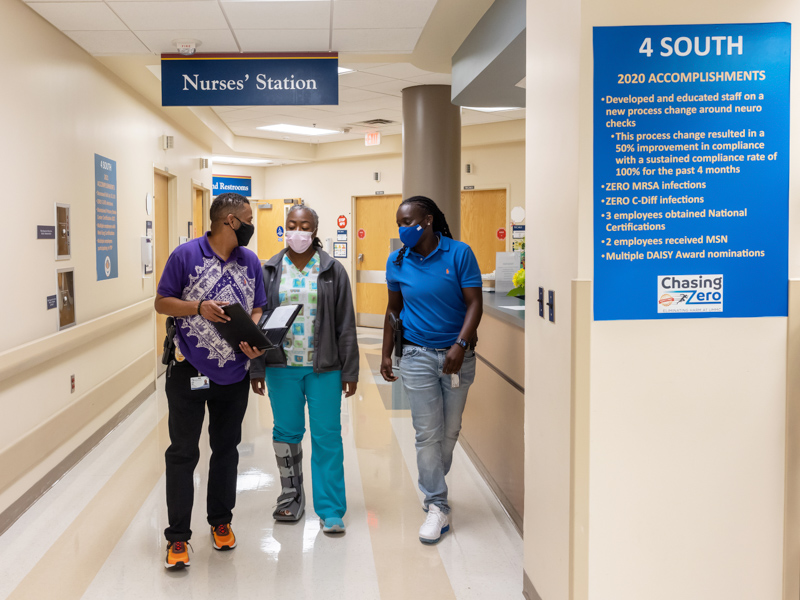
nurse manager Andrea Moore and
Mays about patient behavior issues on 4 South.
Andrea Moore, nurse manager III at 4 South Neurology/Neurosurgery, said her staff is excited to have the officers patrolling the floors full-time, and just a quick phone call away.
“The feedback that I have gotten is they are friendly, approachable and add an additional layer of safety,” said Moore. “I agree.”
The team has been responding to incidents from day one, including “aggressive patients, homeless citizens trying to get help, and visitors and patients expressing concerns about adjusting to hospital rules concerning COVID issues,” said Sergeant Shaun Hiley, who oversees the team. “We have also been called by nursing staff for patients just needing to talk to someone because they are having a bad day.”
The interventions are not limited to patient disputes, said Hiley, who is joined by Officers Garry Lee (who worked during the pilot with Hiley), Sharkey Ford and Shanice Mays.
“What I have learned is that not only do patients have issues and concerns, but our students and staff have issues that need attention, too,” said Hiley. “We have to have compassion, listening skills, be sympathetic and understanding, but also protective.”
By wearing plain clothes, the officers appear more like people who may be in a crisis situation, which lessens the likelihood they’ll be considered a threat, said Hiley.
The BRT concept is the first of its kind in the state, said Wilson.
“You won’t find a program like this anywhere else in Mississippi,” said Wilson. “This is a monumental step in our efforts to reduce workplace violence.”
Non-emergency calls for the BRT should be made to 601-984-1360. For emergencies, call 601-815-7777.
UMMC employees and students can visit the BRT page for more information about the program.



